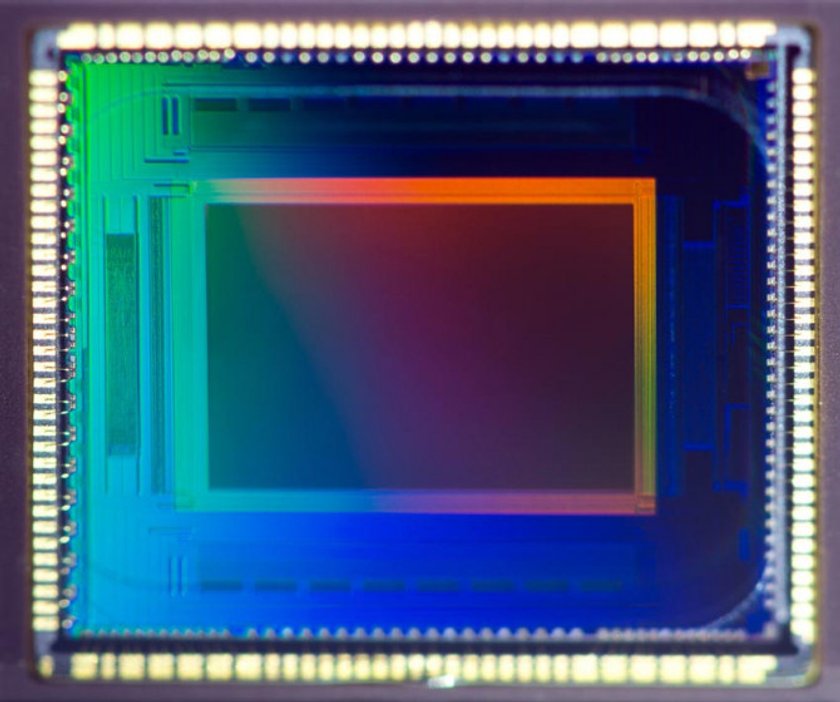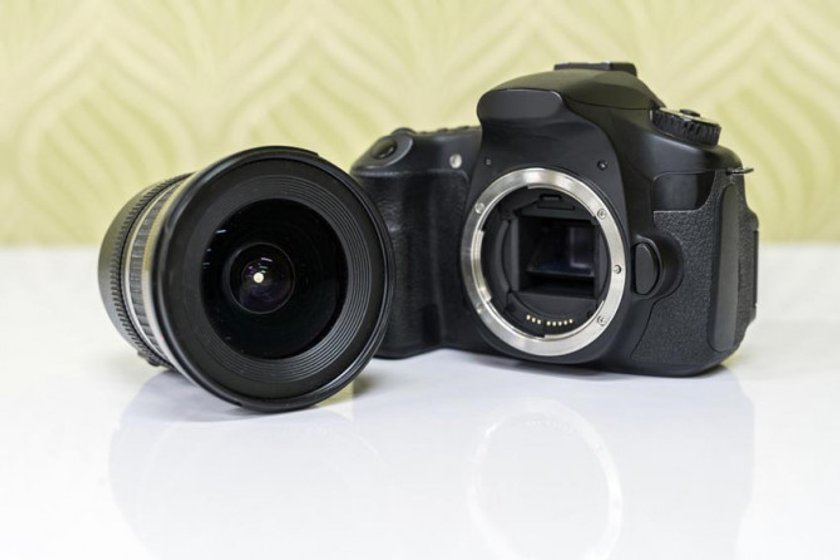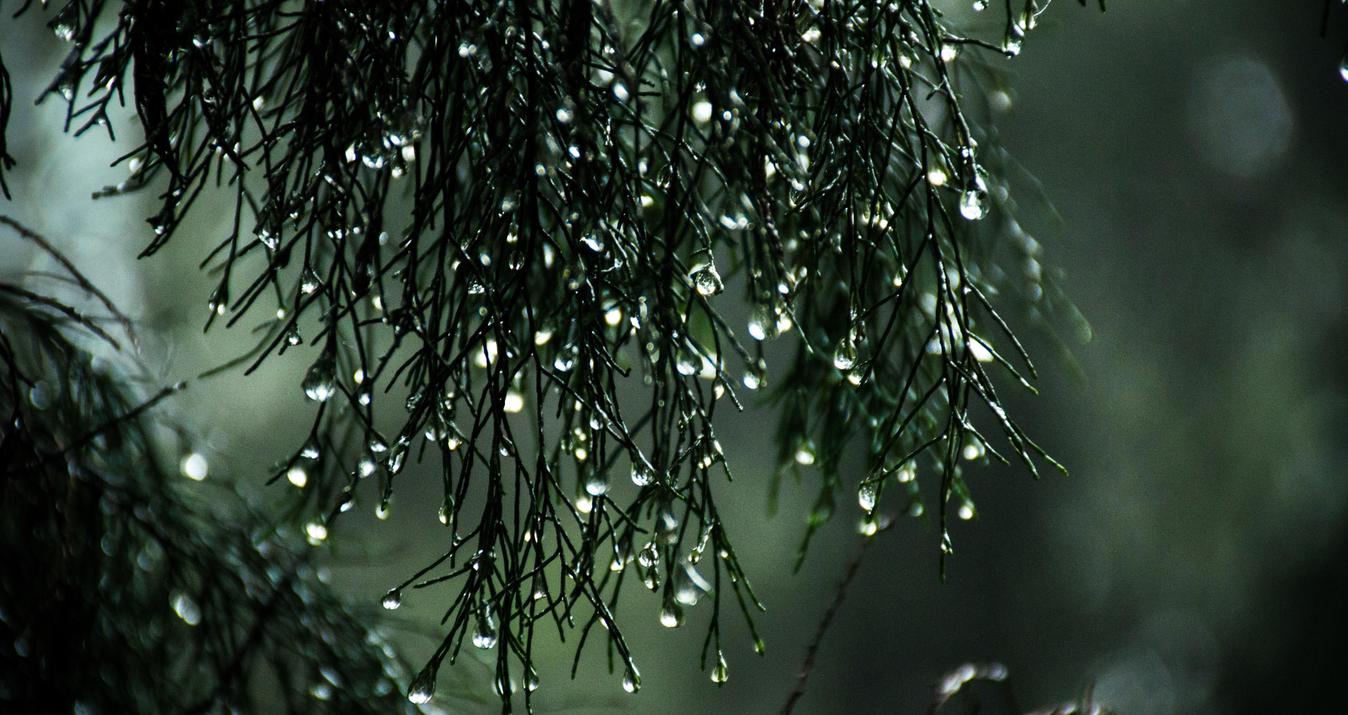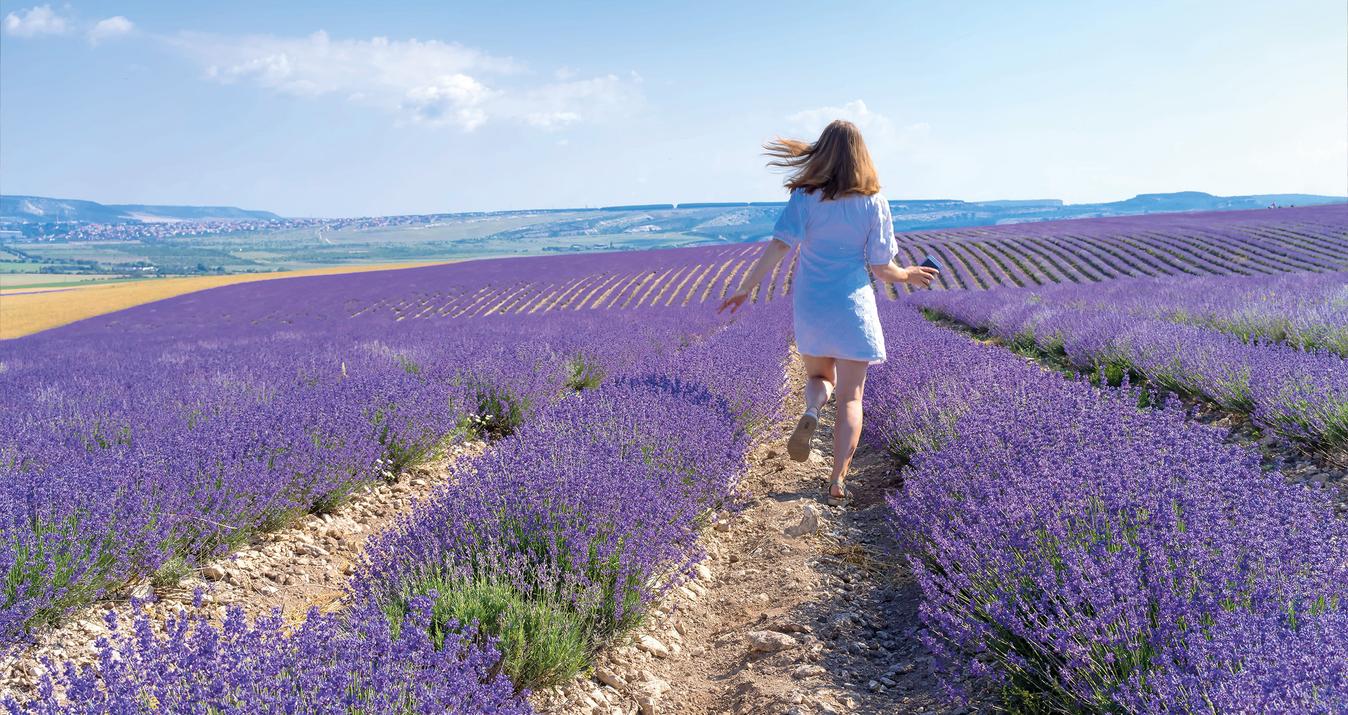Full Frame vs. Crop: How to Make the Right Choice
June 29, 2017

In this article, the Skylum team breaks down full frame vs. crop and gives photographers the information they need to make their choice. We also look at the difference between full frame and crop sensors.
New photographers over the years have toiled with the decision — going back and forth between full frame and crop and trying to decipher what the terms stand for and what that means for them.
So, the Skylum team has broken down it down into 5 sections with this article. We’ll cover the basics, the full frame sensor, the crop frame sensor, the crop factor, and what this all means to you, as the photographer. We will also definitely figure out the difference between crop sensors and full frames.
The Starting Point
In photography, the reference point for talking about a camera’s crop sensor — is a piece of 135 mm film. Full frame sensors are the same size as this film (with a width of 35mm).

Each DSLR has an image sensor inside (it hides behind a mirror and resembles a green rectangle) and this sensor is what conveys the information that creates your photos. Essentially, your camera’s sensor, in combination with your lens, effects how your viewer will see your image. In addition, the debate about full frame sensor vs crop sensor has now become particularly relevant.
Cameras differ in many technical parameters: DSLRs and mirrorless, amateur and professional. But nothing influences the picture as much as the size of the camera sensor. That is if you don't count the lenses, which are more important in photography than the camera, and usually make up more than half of the cost of all photographic equipment.
But we're not talking about the lens which is set to normal, we're talking about the camera sensor, the most important and expensive part of a camera.
Since medium format cameras are very expensive, and budget compact cameras are limited in functionality because of the fixed optics - these are extremes that we do not recommend as an alternative when choosing a camera. That's why it remains a conscious choice. What are the advantages and disadvantages of camera full frame vs crop?
Let's say right away that no full frame will help you create a masterpiece if you are a beginner who does not know the settings, composition rules, and light techniques. It is better to take a crop and learn how to shoot interesting and captivating shots. You should clearly understand the pros of full frame vs crop camera. Only when you understand that you have hit the ceiling and that you lack the technical possibilities of a full-frame (wide dynamic range, high light sensitivity, beautiful blur), then you should think of a full-frame camera.
If all that makes sense, let’s move on to full frame versus crop frame.
What is Full Frame Sensor?
What does a full-frame camera mean? The full frame sensor, like we said above, is the digital version of a 35mm film frame. Physically, the full frame sensor that lives inside a camera is larger than a crop frame sensor.
As the larger sensor allows for large photo sites on that sensor, full frame DSLRs shoot better in low light conditions and with high ISO ranges. Now you understand what is a full-frame camera.
First of all, a feature of cameras with full-frame sensors is the scale of the viewfinder, which is noticeably larger than that of conventional cameras with a cropped sensor. This, in turn, provides excellent opportunities for easy selection of shooting parameters and perspectives. But the most important advantage of full frame sensors is of course the ability to get sharper and better images at higher ISOs, with much less digital noise.
A large full-frame sensor allows you to add a larger number of photographic elements, and even a larger full-frame sensor size, which has a positive effect on the perception of light flux. Therefore, for the same number of megapixels, a full-frame camera will always provide better results at high ISO settings than a normal camera with a cropped sensor. The size of the full-frame sensor gives you the opportunity to seriously increase the ISO sensitivity of your shots without having to worry about noise becoming visible in the image.
The difference also manifests itself in the effect of increased focal length. The cropped sensor captures a smaller area of the image, so the final picture looks as if you were using a lens with a longer focal length. That is, on a cropped lens, the equivalent focal length increases in proportion to the crop factor. So, a full-frame camera meaning is not as complicated as it might seem at first glance
Advantages of full-frame cameras
Reasons why photographers prefer this equipment:
- Beautiful blur and bokeh.
- Less noise if you're photographing with poor or insufficient light. Also, full-frame sensors tend to have a higher working ISO. This means the frame will be brighter and there will be less noise.
- Wide dynamic range. That is, your photos will have more information in lights and shadows. For example, when shooting landscapes, there's less chance of getting a beautiful sky and water/woodland/forests beaten out in black.
- Deeper colors in full frame vs crop frame. This means the camera conveys more shades and halftones. This is especially important if you like your photos to have few contrasts, colors, and tones, you're drawn to minimalism and black-and-white photos.
- Ultra Wide Angle. You can use ultra-wide-angle optics without worrying about the camera cropping the edges.
Disadvantages of shooting full frame
Of course, not everything is as perfect as it might seem at first glance and there are certain drawbacks:
- Price. For the price of a single full-frame camera, you can put together a complete beginner's kit with a cropped camera, a lens, and a couple of extras like flash drives, a camera backpack, or a tripod in addition.
- Vignetting and drop in sharpness at the edges of the full-frame camera vs crop. Lenses are imperfect. This often causes the edges of the frame to darken slightly - vignetting appears, as well as a drop in sharpness. You won't notice it in cropped cameras as the cropped sensor will simply cut out these flaws.
- Weight and size.
What is Crop Frame Sensor?
What is a cropped sensor camera? The crop frame sensor is a sensor that is smaller than 35mm (as if your 35mm piece of film has edges that have been cropped). Crop sensors are not as wide as full frame sensors and provide a narrower angle of view.
Cropped cameras are devices with a cropped, reduced sensor. The sensor is the most important, expensive, and complex part of a camera. It is what receives the light in the camera through the lens and converts it into an image. You need to understand this to be able to argue about the advantages of cropped frame vs full frame.
The ancestor of the sensor is the film in old cameras. One frame of the film is a small square. It is the physical size of the sensor which is taken as a starting point and is called a full-frame (also called full frame). All cameras with smaller sensors are called crops.
In simple terms, a camera crop sensor is sort of cut off at the edges. If you take a picture from the same distance and with the same lens on a cropped camera and a full frame, it looks as if the full frame photograph was cropped on both sides with scissors and a cropped image appeared. This also gives you the impression that the cropped image looks as if it is shot closer - the focal length of the lens increases.
By the way, new photographers are confused by the fact that full-frame and crops often do not have the same size sensors, but the number of megapixels is identical. And sometimes you can find models where crop sensors will have even more megapixels. Is that good or bad? Is it worth pursuing?
The matrix consists of light-sensitive elements - diodes or pixels, as they are called in the digital space - in phones, computer monitors, and laptops. They are the ones responsible for catching the light that goes into the camera. The bigger the physical size of the pixels, the better. This explains a little bit about arguments of full frame vs crop sensor images.
It turns out that cropped matrices even with the same number of megapixels will catch less soft light and in smaller volumes. By the way, this is why modern phone models with a huge number of megapixels in the camera specifications still produce noticeably worse quality than cameras.
Advantages of crop sensor cameras
Let's now look at the pros of using cropped sensor cameras:
- The camera takes a larger picture by increasing the focal length of the lens. Don't like it? Get a special adapter - a speed buster. It not only levels out the cropped factor (how much your camera crops and zooms in) completely, but it also boosts the aperture. And so one lens will make two.
- More optics variants for crop sensor vs full frame. Full-frame lenses fit cropped cameras. The reverse process (where a cropped lens fits a full-frame camera) doesn't work for all manufacturers (like Canon) - if you put a cropped lens on a full frame, you'll break the camera.
- Compactness. Cropped cameras tend to be much smaller and lighter than a full frame. This is one of the main aspects when we discuss the topic of full frame vs crop sensor.
- Budget. Often for the price of just the body (camera without optics) of a full frame, you can buy a cropped camera and a lens (or even a few) in addition. Lenses, by the way, are also cheaper than full frames.
- The photo may seem sharper. This is because the angle of view is wider in the full frame, and lenses often lose sharpness around the edges.
Disadvantages of crop sensors
It's time to discuss the disadvantages that you will have to face when using cropped sensor camera:
- Noise if you're shooting in low light and in the dark. This is where small sensors lose out to a full frame.
- It's hard to get an ultra-wide angle.
- Worse background blur, and harder to get bokeh than full frame.
- The less dynamic range of crop frame vs full frame. That is, if you compare it with full-frame cameras, details in shadows and lights are lost.
What’s the Crop Factor?
Here’s where things get a little confusing for most of us. We have lenses that are designed to work on 35mm frame size — though not all cameras have this size image sensor.
The crop factor refers to the magnification of the view when looking through the viewfinder. Most APS-C and DSLR cameras have a crop factor of 1.5x (Nikon) or 1.6x (Canon). This crop reduces your field of view through a lens. For example, a 50mm lens on a full frame sensor will have a field of view of 50mm — whereas this same lens on a crop sensor camera will have a field of view of 50mm x 1.5 or 1.6 (the crop factor) which leads your 50mm lens to feel a bit more telephoto than it otherwise would — more like a 75mm lens.
So What Does This All Mean For You (The Photographer)?
A few years ago, serious photographers were perhaps more insistent upon purchasing full frame cameras.

Today, however, the leaps and bounds of technology with cameras make it possible to choose from a wide variety of lenses for your crop sensor camera. These cameras also perform better now in low light situations and have higher ISO ranges.
Consider your budget: full frame sensors are more expensive to manufacture and as such — full frame cameras tend to be more expensive than crop frame cameras.
Full-frame cameras are typically ideal for landscape images while smaller-sensor cameras might be more ideal for wildlife and close up photography.
As with many things, both of these different formats have their advantages and their disadvantages — their ups and downs — the positive and the negative.
But, now that you have a clearer understanding on what the terms mean, you can do you camera research with more confidence and figure out what sort of sensor is best for you.
To examine some of the differences between the images obtained with two different cameras, you may have to use blend mode and layer style in the photo editors. If you need to learn how to create a duplicate layer in Photoshop, find some tutorials. Of course, following along with Adobe software is quite difficult. Working with overlay and different sliders to change opacity is especially challenging for beginners. Look like it's going to take a long time to master all the available features and create a new layer.
In photo editors, layers are the foundation. You can use them to combine different images into one, create stunning collages, superimpose text with effect using, or even make image adjustments. A separate layer allows you to change some components behind the subject with right-click while leaving others untouched.
We recommend using the layers panel in the modern photo editor Luminar Neo. Now masterpieces are very easy to create. You will be able to work much faster with layers and add final touches to any of your photos. Edit the whole picture or just a part of your original image. You can change the color to a natural variation of the photo taken with a cropped sensor with an adjustment layer. Use the brush tool when it is needed without reading complicated manuals, everything is simple and intuitive.
From the Skylum team, happy photo-taking, whatever you choose!
Final thoughts
A crop vs full frame gives a wider dynamic range, better color, and a shallower depth of field. Also, these cameras convey more detail that clients won't notice anyway, but you can see the difference when you zoom in on the image. That doesn't mean you'll improve the quality of your work, though.
And at the end, we have to say what really affects your photos: composition, lighting, and retouching. A good lens is better than a full-frame camera, it will help you take good photos a lot more. In general, develop your skills instead of buying new equipment.






